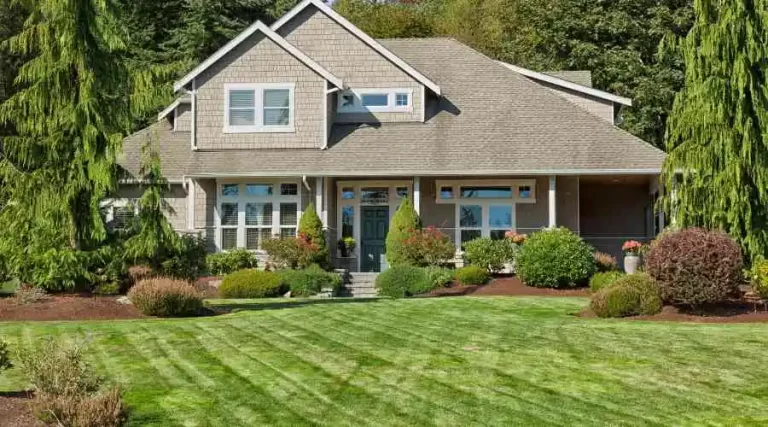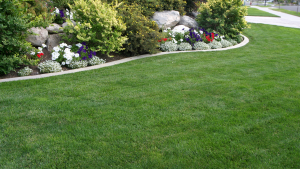If you own a home, you are aware of the difficulty in maintaining lush, green grass. Particularly when grass diseases strike, resulting in the development of brown patches or spots with a rusty appearance. There are various things that can cause grass disease, depending on where you reside. Your lawn may experience problems due to a variety of factors, including inadequate or excessive watering. The secret to a successful cure is figuring out which particular fungal is causing the issue and treating it properly.
Baton Rogue Landscape Pros have you covered if you’re unaware of what’s wrong with your lawn or how to fix it. We’ll present a thorough lawn disease identification chart for the most prevalent lawn diseases in your area in this article. We’ll also go through each condition’s symptoms and available therapies.
Forms of Lawn Fungi
Your lawn may be harmed by a number of different fungi, which is unfortunate. This fungus can have a variety of effects, from minor ones like a few brown spots to more serious ones like destroying your entire grass. Early detection and treatment are essential for dealing with grass diseases.
What causes brown patch disease in lawns?
You probably have brown patch lawn disease if huge, brown patches start to emerge on your lawn. A fungus called Rhizoctonia solani, which thrives in warm, humid environments is the cause of this disease. The two seasons where brown patch lawn disease is most prevalent are spring and fall. In order to spot brown patch lawn disease, keep an eye out for these signs:
- Brown patches that are two to eight feet in diameter and have an oval or circular form
- Brown grass patches encircled by a green border
- Blades of grass that seem withered or broken
You might need to correctly aerate and water your grass in order to treat brown patch lawn disease. You’ll need to apply a fungicide if that doesn’t work. Make sure you adhere to the label’s guidelines.
Which Lawn Disease Is Most Common?
One of the most prevalent lawn diseases in the US is dollar spot. Sclerotinia homoeocarpa is the sort of fungus that causes it, and it usually manifests itself in the late spring or early summer. On lawns that have had little fertilization or have been under stress from a drought, dollar spot lawn disease is most prevalent. Look for the following signs of dollar spot lawn disease:
- Tiny, round brown spots that range in size from one to four inches.
- Brown grass patches with a golden aura around them
- Blades of grass that seem stunted or broken
To treat the illness that causes dollar spots on lawns, you must apply a fungicide. Apply the fungicide in the early morning or late evening when it’s colder outside, and make sure to properly follow the label’s directions.
Identifying Fairy Rings
The fungus Marasmius oreades is the culprit behind the fairy ring lawn disease, which normally strikes in the late spring or early summer. The majority of fairy ring lawn disease cases occur on lawns that are shaded or have inadequate drainage. Look for the following signs of fairy ring lawn disease:
- Brown patches that are circular or ring-shaped and range in size from two to eight feet
- Brown grass patches encircled by a green border
- Growing fungus or mushrooms in the damaged area
You might need to remove the afflicted lawn sections and replace them with healthy sod in order to treat fairy ring lawn disease. Moreover, you might be able to treat it by using a fungicide. Make careful to select a product approved to combat this specific fungus.
Can the disease Pythium Blight Destroy My Lawn?
A fungus known as Pythium is the source of the grass disease known as Pythium blight. Pythium blight is particularly prevalent on lawns in shaded locations or with poor drainage, and it often appears in late spring or early summer. The following signs should be looked for to determine pythium blight:
- Tiny, brown areas that seem to be saturated
- patches of brown or yellowed grass that have died
- The damaged region is emitting a musty odor.
You must use a fungicide to treat pythium blight. A landscape professional should apply the fungicides required to treat this disease. However, if you decide to do it yourself, be sure to read and follow the instructions on the label carefully. You may also need to reapply the fungicide every two weeks until the disease is gone.
Can a Drought Cause Lawn Disease?
Powdery mildew lawn disease is caused by a fungus called Erysiphe graminis. It typically occurs in late spring or early summer, and it’s most common on lawns that are poorly ventilated or that have been stressed by drought. To identify powdery mildew lawn disease, look for the following symptoms:
- White or grayish-white powdery growth on the leaves of grass
- Grass blades that appear stunted or discolored
- Patches of brown or yellow grass
To treat powdery mildew lawn disease, you should start by opening your lawn to air and sunlight. If possible, aerate your lawn regularly and trim back trees and bushes to allow more sun to get through. It’s also important to ensure you are not overwatering your lawn – this can lead to various lawn diseases.
What is Red Thread Lawn Disease?
Red thread lawn disease is caused by a fungus called Laetisaria fuciformis. It typically occurs in late spring or early summer, and it’s most common on lawns that are poorly fertilized or that have been stressed by drought. To identify red thread lawn disease, look for the following symptoms:
- Small, reddish-brown patches of grass
- Patches of grass that appear thin or stunted
- Grass blades that are covered in small, red threads
To treat red thread lawn disease, it’s important to fertilize your lawn properly with the right concentration of nitrogen fertilizer. If that doesn’t help, you’ll need to apply a fungicide.
How to Identify Rust Lawn Disease
Lawn rust lawn disease is caused by a fungus called Puccinia graminis. It typically occurs in late spring or early summer, and it’s most common on lawns that are poorly ventilated or that have been stressed by drought. To identify lawn rust lawn disease, look for the following symptoms:
- Small, reddish-brown or orange pustules on the leaves of grass
- Patches of brown or yellow grass
- Grass blades that appear stunted or discolored
To treat lawn rust lawn disease, the best thing you can do is to fertilize your lawn correctly and regularly. Make sure to choose a fertilizer that is right for your soil type and climate and stick to a schedule. Ask a local landscape professional for advice if you’re unsure which product to use.
What is Snow Mold?
A type of fungus called typhus causes snow mold lawn disease. It typically occurs in late winter or early spring and is most common on lawns located in cold, wet areas. To identify snow mold lawn disease, look for the following symptoms:
- Patches of grass that appear matted down
- Small, brown, or blackish-colored spots on the grass blades
- A musty odor coming from the affected area
To treat snow mold lawn disease, first, remove snow or soggy leaves from the lawn. Then, mow and rake out the area to encourage it to dry faster. If these measures don’t help, you may need to apply a fungicide or other treatment.
Why is My Lawn Turning Brown?
Summer patch lawn disease is caused by a fungus called Magnaporthe poae. It typically occurs in late summer and is most common on lawns located in warm, humid areas. To identify summer patch lawn disease, look for the following symptoms:
- Patches of brown or yellow grass
- Grass blades that appear stunted or discolored
- A musty odor coming from the affected area
Summer patch lawn disease is difficult to eliminate, so prevention is your most effective treatment method. If possible, apply a fungicide to treat and prevent the summer patch from taking hold. Then re-apply the product regularly to keep it from creeping back into your lawn.
How to Combat Lawn Diseases
Lawn diseases can be challenging, even when you know how to identify and treat them! Ultimately, keeping your lawn healthy and thriving requires a combination of proper mowing at the optimal height, watering, fertilization, dethatching, aeration, overseeding, and the application of treatments like fungicide when appropriate. The best way to manage diseases is to understand and recognize conditions favorable to fostering disease development. Often a change in lawn care practices will be enough to keep disease problems at a minimum.
If the time and effort required to effectively deal with lawn diseases on your own are too much, call your local landscape professionals. Baton Rogue Landscape Pros can identify the type of lawn disease affecting your grass and develop a treatment plan to get your lawn back to good health. To learn more, call (225) 800-4417 or schedule an appointment online today.





